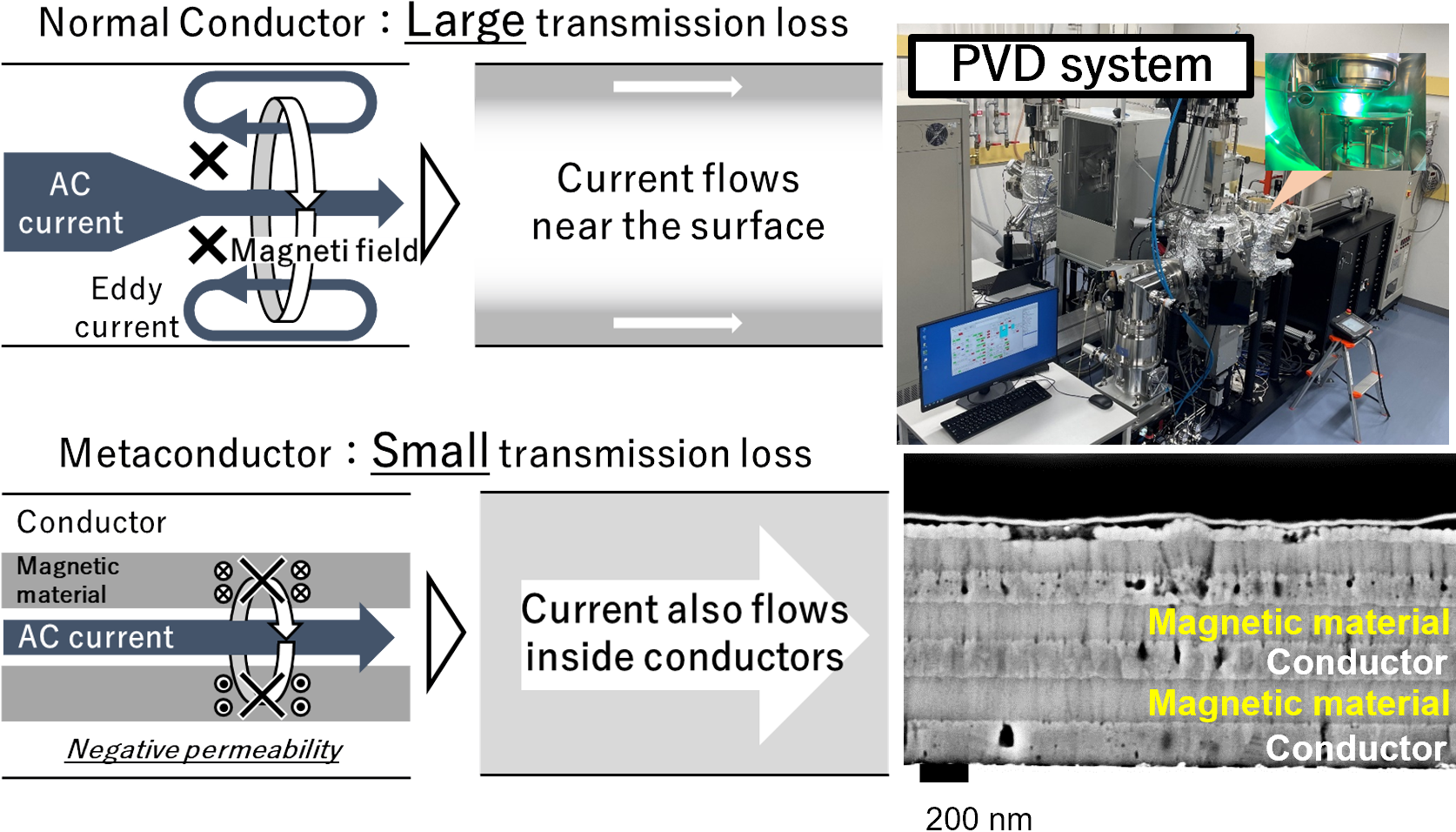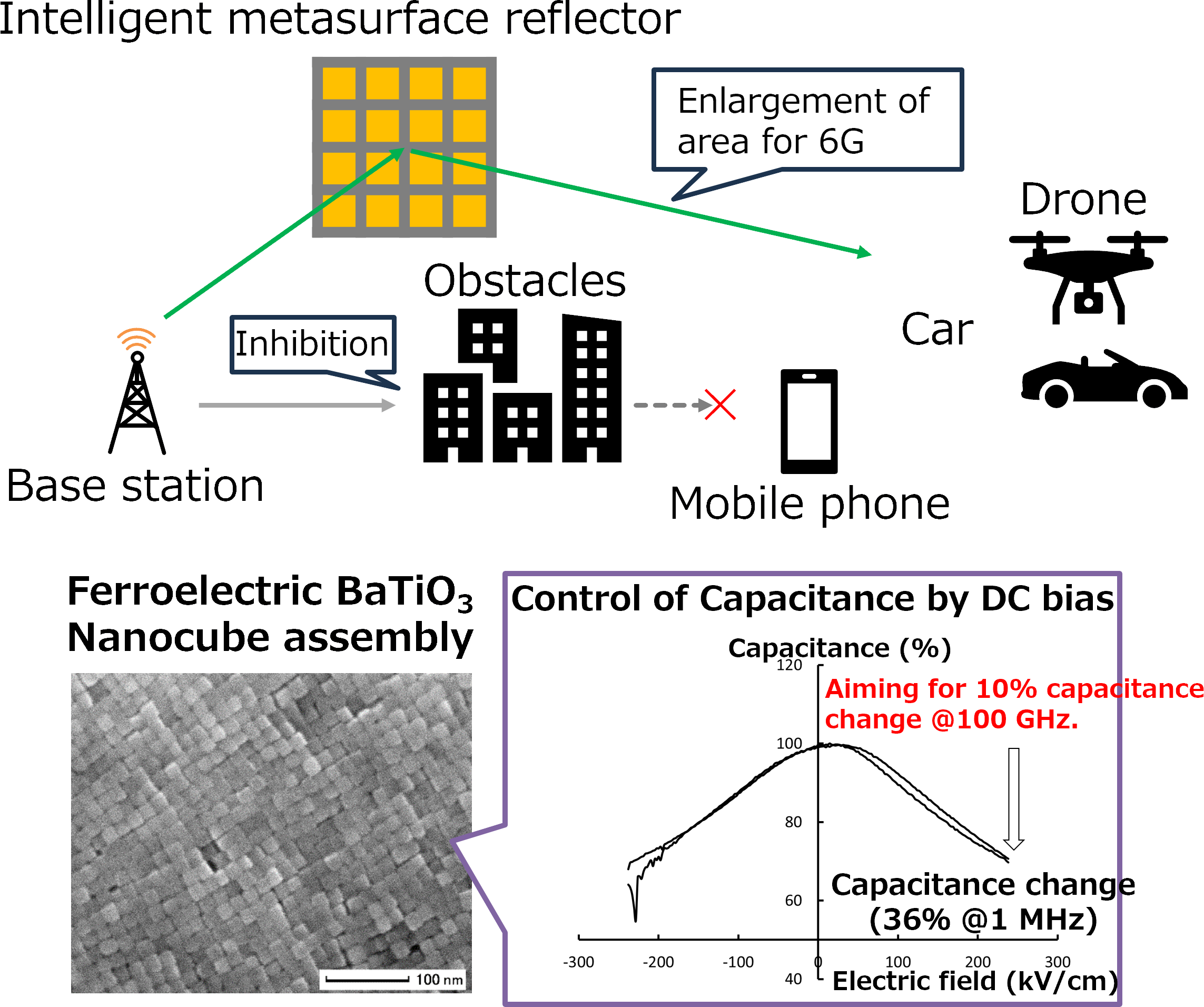Next-Generation Electromaterials Research Group
To implement next-generation high-speed telecommunications and IoT systems into society, we are promoting the design of advanced functional materials for high-performance electronic components, e.g., low-loss metaconductors and intelligent reflective metasurfaces. These materials are developed using advanced manufacturing processes, nanostructure control, and analytical technologies applied to ceramics, metals, and inorganic/organic composites."
Group Research Theme
Development of Low-Loss Metaconductor to Reduce Transmission Loss in 6G Communications
In the next-generation mobile communication systems, sub-THz waves are expected to be utilized to enhanced mobile broadband (eMBB) and massive machine type communication (mMTC). However, when these sub-THz signals pass through a conductor, they only flow along the surface due to an electromagnetic phenomenon known as the skin effect, resulting in significant transmission loss. To overcome this issue, we are focusing on low-loss conductors known as metaconductors—multilayered structures of conductive and magnetic materials that can suppress electromagnetic induction by using a unique property of negative magnetic permeability in magnetic materials. We are promoting research and development to enable their practical application in high-frequency bandwidths.

Operating principle of low-loss conductor “metaconductor” and cross-sectional microstructure of prototype metaconductor fabricated by vapor phase deposition system
Development of Intelligent Metasurfaces to Enlarge Area Coverage for 6G Communications
Sub-THz waves, which are expected to be used in next-generation high-speed telecommunication systems, propagate in straight lines and cannot easily go around obstacles. To send signals quickly to where they are needed, many special devices known as metasurface reflectors are used. These devices can change the direction of radio waves. Our group is developing new reflectors that can actively control the direction of the signal by changing the material properties using external fields. We are focusing on ferroelectric materials since their electrical properties can be modified by applying an electric field. As such, we are exploring their potential use in metasurface devices.

Image of an intelligent metasurface reflector, nanostructures of a ferroelectric BaTiO3 nanocube-assembled film synthesized by the hydrothermal method, and its dielectric properties under an applied electric field.
Staff Members
| position | name | |
|---|---|---|
| Leader, Group | MIMURA Ken-ichi | |
| Senior Researcher | TSURUTA Akihiro | |
| Senior Researcher | AOYAGI Rintaro | |
| Researcher | USUKAWA Ryutaro | |
| Researcher | YAMAMOTO Ryota | |
| Attached to Research Group | ITASAKA Hiroki |
- Top page
- About Us
- Research Groups
- Materials Joining Research Group
- Lightweight Metallic Materials Research Group
- Ceramic Components and Processing Research Group
- Engineering Ceramic Research Group
- Wood-based Composites Research Group
- Next-Generation Electromaterials Research Group
- Advanced Metal Powder and Process Research Group
- Sensing Materials Research Group
- Carbon-Neutral Materials Research Group
- Functional Magnetic Materials Research Group
- Environmentally Adaptive Interface Materials Research Group
- Job Opportunities
- Access
- Contact